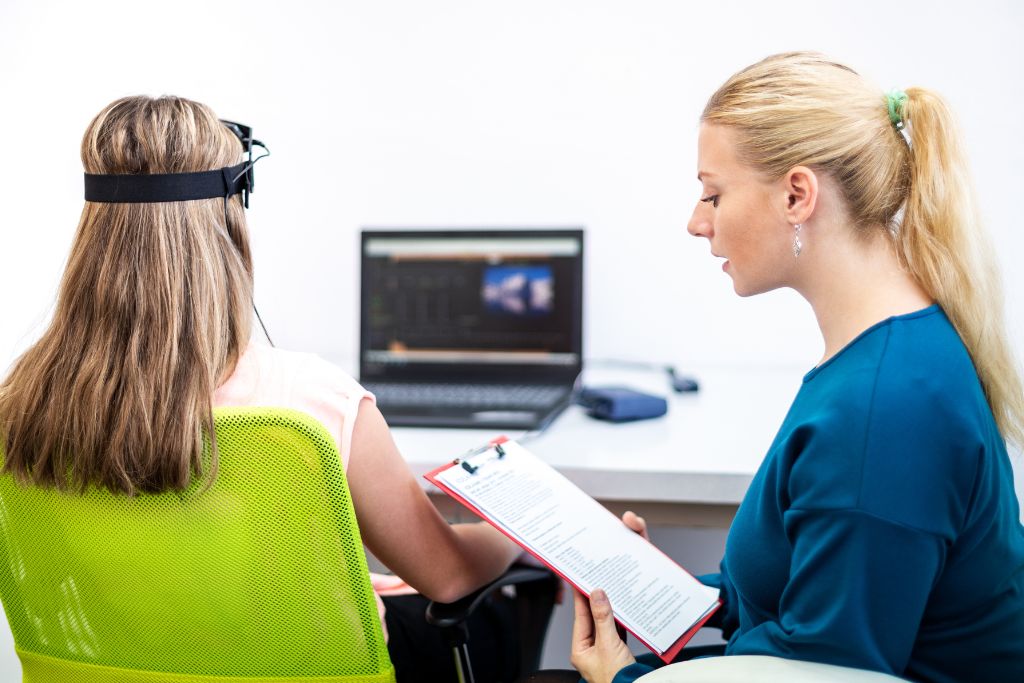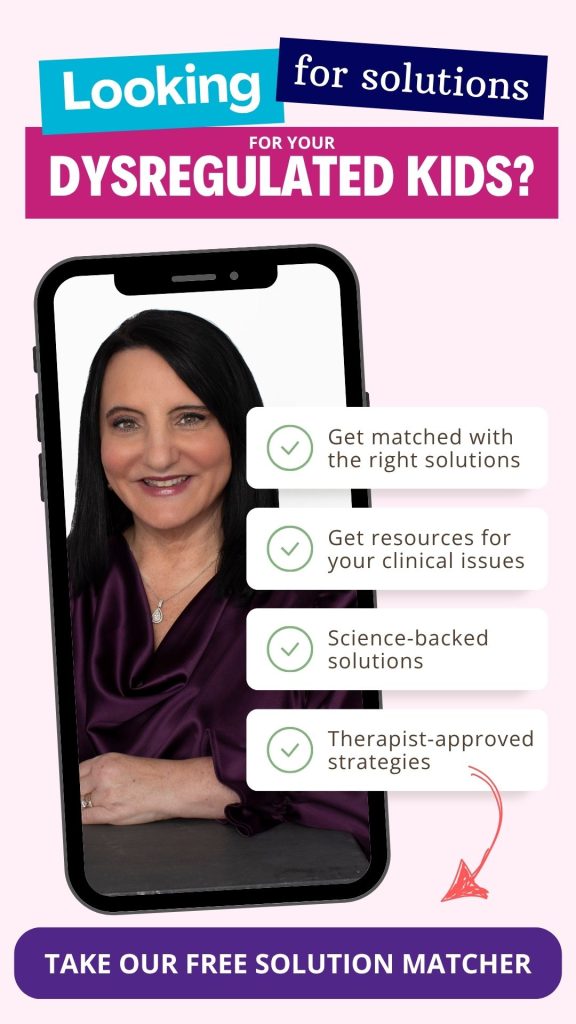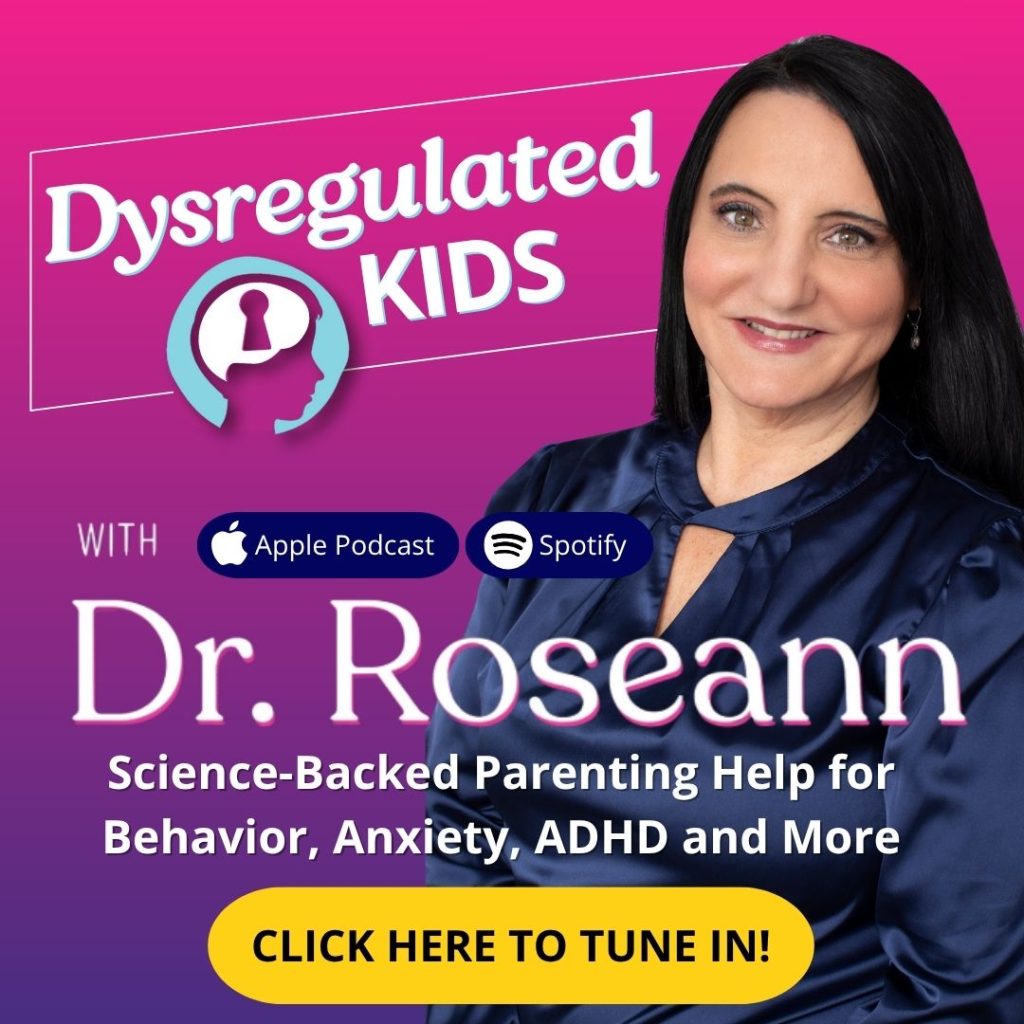Estimated reading time: 15 minutes
Seeing your child wrestle with stress, focus, or overwhelming emotions can drain your energy and hope.
Thankfully, gentle yet powerful tools like neurofeedback and biofeedback offer real ways to help your child find calm and confidence from within.

What Is Neurofeedback—and How Does It Help a Dysregulated Brain?
Neurofeedback is a science-backed, drug-free therapy that uses real-time brainwave feedback to help the brain learn to stay calm, focused, and regulated.
When the brain’s stuck in dysregulation, you can see it plain as day. Maybe your child’s dealing with:
- Big feelings that explode out of nowhere
- Racing worries that just won’t quit
- Constant focus battles (especially when it matters most)
- Bedtime becoming a nightly war zone
- Even seizures or other neurological issues that seem out of the blue
These aren’t character flaws or parenting failures. They’re symptoms of a brain that’s working way too hard just to get through the day.
By training the brain into a healthier rhythm, neurofeedback can improve:
- Focus and attention
- Mood and emotional control
- Anxiety and depression
- Sleep quality
- Neurological symptoms like seizures
As the brain finds balance, kids grow calmer, more connected, and more capable—without harsh side effects, just occasional mental fatigue like after a good workout.
At our center, we:
- Start with a QEEG brain map
- Create a customized care plan
- Support your child every step of the way
How Does Neurofeedback Work?
Neurofeedback enhances communication between neurons, which produces synchronized brainwave patterns that influence:
- mood
- behavior
- thinking
Some brainwaves energize us, others calm us—and when they’re out of balance, dysregulation can show up as:
- big emotions
- anxiety
- focus issues
- headaches
- sleep problems
Types of Brainwaves
- Excitatory waves increase arousal and focus.
- Inhibitory waves promote calm and rest.
Imbalances in these waves are linked to symptoms like anxiety, inattention, or emotional outbursts.
Brainwave States and Emotions
- Slower waves (delta, theta): drowsiness, zoning out.
- Faster waves (beta, high beta): focus, stress, or anxiety.
Neurofeedback helps train the brain to shift into more appropriate wave patterns.
Step 1: QEEG Brain Mapping
- A QEEG (quantitative EEG) captures and analyzes brainwave patterns via sensors on the scalp.
- Reveals areas of over- or under-activation and connectivity issues.
- Provides data to tailor a personalized neurofeedback protocol.
Step 2: Brainwave Training via Feedback
- The brain receives real-time feedback when it produces desired wave patterns (via visual/auditory cues).
- Based on operant conditioning (Pavlov, 1927), the brain learns to repeat healthy patterns.
Step 3: Regulation and Symptom Reduction
- Over time, neurofeedback regulates the central nervous system.
- Supports conditions like ADHD, anxiety, depression, seizures, and sleep issues.
What Does Dysregulation Look Like?
Externalized symptoms
- Anger
- Impulsivity
- Hyperactivity
Internalized symptoms
- Inattention
- Rumination
- Worry
Whether it’s loud or quiet, dysregulation can hold kids back from feeling calm, confident, and connected.
Tracking Progress with EEG Neurofeedback
One of the most powerful parts of neurofeedback? You can see your child’s brain changing.
Our equipment tracks progress over time so you’re not just crossing your fingers—you’ll have real data to show how your child’s brain is healing.
What are the Benefits of Neurofeedback?

With two to three sessions a week, kids gradually shift—sometimes in small steps, sometimes big—and within five to six months, their brains begin to rewire for the better.
When we calm the brain first, everything starts to fall into place—focus, mood, sleep—like finding the missing puzzle piece.
What You’ll See Improve as the Brain Regulates:
1. Improved Attention and Focus
Neurofeedback strengthens communication between key brain regions and boosts those executive functioning skills like:
- organization
- planning
- follow-through
2. Reduced Anxiety and Stress
Kids become less reactive and more in control when the brain shifts into a calmer, parasympathetic state. Emotional triggers no longer feel like tidal waves.
3. Better Sleep
When brainwaves normalize, kids fall asleep faster, stay asleep longer, and wake up calmer. Bedtime battles and night-time fears begin to fade.
4. Enhanced Mood and Emotional Regulation
A calmer limbic system means fewer meltdowns, more self-awareness, and stronger coping skills. You’ll start to see your child bounce back instead of break down.
5. Reduced ADHD Symptoms
Neurofeedback helps kids learn to self-regulate. It reduces impulsivity and hyperactivity and increases sustained attention—without meds. In fact, it’s rated a Level 1 “Best Support” by the American Academy of Pediatrics (Loo, 2003).
6. Relief from Depression Symptoms
Withdrawal, sadness, and fatigue often signal sluggish brainwaves. Neurofeedback helps balance those patterns and rebuild emotional resilience (Barlas, 2021).
What is Biofeedback?
Ever wish your child had an internal “calm-down” switch when stress hits? That’s exactly what biofeedback helps create.
It’s a science-backed therapy that teaches kids how to regulate their bodies—so they feel in control instead of overwhelmed. By using gentle, real-time feedback from electronic sensors, kids learn to shift how their bodies respond to stress.
Over time, that stress response softens—and self-regulation becomes second nature.
What Biofeedback Involves:
- Tracking heart rate, breathing, and muscle tension
- Using sensors to reflect how the body reacts to stress
- Training the nervous system to self-regulate through repeated sessions
What Biofeedback Can Help With:
- Chronic pain that keeps them up at night
- Anxiety that hijacks their day
- Tension headaches that sneak in like storm clouds
- High blood pressure tied to emotional overload
- Sleepless nights where their mind just won’t shut off
What is HRV Biofeedback?
Think of it like giving your child’s nervous system a personal trainer—but for calm. HRV biofeedback teaches their body how to shift from stress mode into a state of balance and control.
It focuses on improving heart rate variability (HRV)—those tiny variations between heartbeats that reflect how flexible and resilient the nervous system really is.
What HRV Biofeedback Involves:
1. Measures Heart Rate Variability (HRV)
Tracks the time variation between consecutive heartbeats to assess autonomic nervous system flexibility.
2. Uses Real-Time Feedback Devices
Electronic sensors provide visual feedback on heart rate patterns and HRV in real time.
3. Trains Breath-Heart Synchrony
By slowing the breath and syncing it with the heart, kids learn to steer their bodies back into calm.
4. Promotes Autonomic Nervous System Coherence
As HRV improves, everything flows better. The body moves into a more balanced rhythm where thinking clearly and staying calm just comes easier.
5. Builds Long-Term Regulation
With practice, individuals learn to maintain better HRV patterns over time.
6. Treats a Range of Conditions
- insomnia
- anxiety
- depression
- hypertension
- chronic pain
How Does HRV Biofeedback Help with Emotional Regulation?
Let’s be real—when your child’s nervous system is stuck in overdrive, no amount of deep breathing or “just calm down” ever really cuts it. That’s because their body isn’t being defiant—it’s just dysregulated.
HRV biofeedback steps in to give the nervous system the regulation skills it was never taught.
When guided by a trained mental health professional, HRV biofeedback helps calm the brain and body in a few powerful ways:
1. Activates the Parasympathetic Nervous System
This is your child’s natural “rest and digest” mode. HRV biofeedback helps them shift out of stress reactivity and into a calmer, more regulated state—where healing begins.
2. Regulates Breathing
Breath training sparks the vagus nerve, bringing instant calm and balance to the body.
3. Enhances Emotional Control
By managing physical stress, kids learn to pause, not panic—building better emotional responses.
4. Builds Stress Resilience
Over time, HRV training strengthens the nervous system—so stress doesn’t hit quite as hard or stick around as long. That’s how regulation becomes a real-life skill.
When we help the body regulate, everything changes—focus sharpens, moods even out, and peace finally feels possible.
What is Biofeedback Training Like?
Biofeedback isn’t just a fancy machine or another therapy session—it’s an experience. One where your child gets a front-row seat to how their own body reacts to stress and how they can change that.
1. Tracks the Body’s Signals
Sensors measure stress-related responses like heart rate or muscle tension—giving a window into what’s going on inside.
2. Provides Real-Time Feedback
Kids get instant visual or audio cues that reflect their nervous system’s activity in the moment.
3. Teaches Calming Skills
Breathing, visualizing, relaxing—biofeedback makes these abstract tools real. When kids see their tension drop on-screen while slowing their breath, that’s brain training in motion.
4. Builds Long-Term Regulation
With repetition, kids learn to shift out of stress and into calm—on their own, without the device.
5. Customized and Flexible
No cookie-cutter stuff here. We design it based on your child’s needs—whether it’s focus, anxiety, sleep issues, or sensory overload. Every nervous system tells a different story.
Biofeedback doesn’t just teach calm; it unlocks it.

How is a Biofeedback Session Different from a Neurofeedback Session?
Mental health struggles affect one in five kids these days (CDC, 2020)—families often feel drained and lost, searching for answers that stick around long enough to matter. Ever wonder why quick fixes never seem to last?
Biofeedback and neurofeedback are powerful, drug-free tools that help the nervous system find balance rather than mask symptoms. After 20 years supporting families, I’ve seen firsthand how these gentle, science-backed methods bring real change.
Here’s a quick breakdown of how they’re similar—and what makes them different:
| Aspect | Biofeedback | Neurofeedback |
|---|---|---|
| What They Monitor | Tracks body functions like heart rate, muscle tension, breathing, temperature | Measures brainwave activity using EEG sensors |
| How They Train | Requires conscious effort—kids learn to control body responses through breathing or relaxation | Works subconsciously—brain learns to self-regulate via real-time feedback without active effort |
| Feedback Method | Uses visual or audio signals showing changes in physical states | Often uses video or game-based feedback that changes with brainwave patterns |
| Primary Uses | Effective for anxiety, stress, chronic pain, and body-related symptoms | Targets conditions like ADHD, mood disorders, epilepsy, brain-based regulation issues |
| Speed and Outcome | Both can reduce stress quickly but need consistent sessions for lasting brain and body regulation | Both can reduce stress quickly but need consistent sessions for lasting brain and body regulation |
The BrainBehaviorReset™ Program: Using Neurofeedback and Coaching to Help Children Thrive
Parenting often feels like a nonstop speed puzzle—trying to fit together your child’s needs while juggling daily pressures.
Whether neurodivergent or not, kids and teens can benefit from:
- Managing stress
- Staying calm
- Improving focus
- Boosting confidence
Our BrainBehaviorReset™ Program combines:
- Neurofeedback and biofeedback therapies
- Individual coaching
- Family coaching
- Real-life strategies
- At-home techniques for ongoing support beyond the neurofeedback center
By training the brain and building essential life skills, your child gains confidence and independence to handle tough situations with greater ease.
Parent Action Steps
FAQs
Are biofeedback and neurofeedback safe for children?
Yes, both are drug-free, non-invasive, and considered safe methods to help children learn self-regulation skills.
Can these therapies replace medication for mental health conditions?
They can be effective alternatives or complements to medication, but it depends on each child’s unique needs and should be discussed with healthcare providers.
How do biofeedback and coaching work together?
Biofeedback helps your child understand bodily responses while coaching teaches practical skills to apply that awareness in daily life.
Is ongoing support available after neurofeedback sessions?
Yes, our program includes at-home techniques and coaching to keep progress steady beyond the neurofeedback center.
Citations
Barlas, D. (2021). A Meta-Analysis of the Effect of Neurofeedback on Depression. NeuroRegulation, 8(2), 104–104. https://doi.org/10.15540/nr.8.2.104
Center for Disease Control and Prevention. (2020). Data and statistics on children’s mental health. Retrieved March 15, 2025 from https://www.cdc.gov/children-mental-health/data-research/index.html.
Loo, S. K. (2003). EEG and Neurofeedback Findings in ADHD. The ADHD Report, 11(3), 1–6. https://doi.org/10.1521/adhd.11.3.1.23479
Dr. Roseann is a mental health expert who frequently is in the media:
- The Holistic Counseling Podcast Therapist’s Integrative Tools: Neurofeedback and Biofeedback
- Life’s Essential Ingredients Connecting at the Root
- It’s Gonna Be OK! With Dr. Roseann Podcast: Neurofeedback Series
Always remember… “Calm Brain, Happy Family™”
Disclaimer: This article is not intended to give health advice and it is recommended to consult with a physician before beginning any new wellness regime. *The effectiveness of diagnosis and treatment vary by patient and condition. Dr. Roseann Capanna-Hodge, LLC does not guarantee certain results.
Are you looking for SOLUTIONS for your struggling child or teen?
Dr. Roseann and her team are all about science-backed solutions, so you are in the right place!
Grab your complimentary copy of











